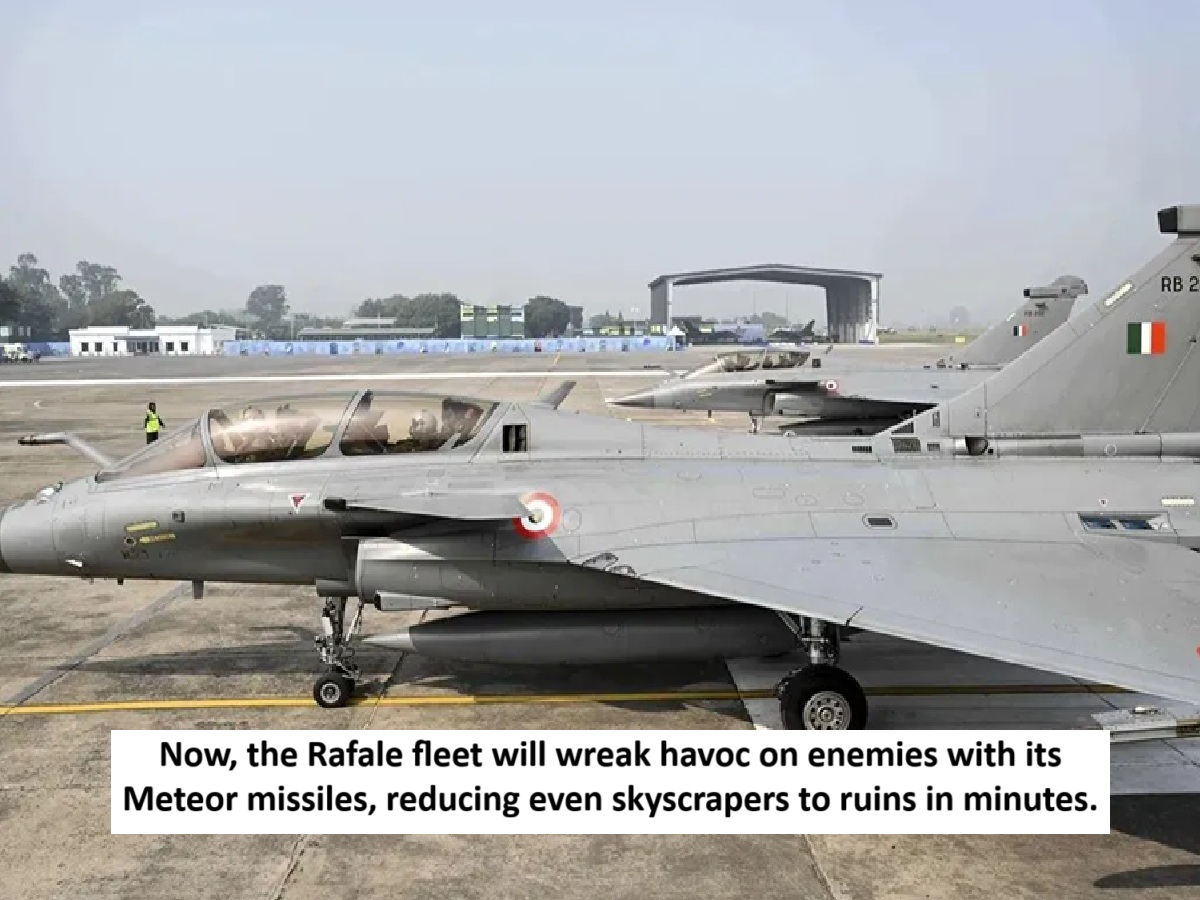
News Topical, Digital Desk : The Rafale aircraft, synonymous with Pakistan's destruction in Operation Sindoor, are now poised to wreak even more havoc on the enemy. India is seriously considering a proposal to purchase Meteor missiles, among the world's most advanced air-to-air missiles. The aim is to enhance the Indian Air Force's capabilities exponentially. If this deal is finalized, Meteor missiles from the Rafale fleet will wreak havoc on the enemy.
The strength of the Indian Air Force will increase
India's move to acquire more Meteor missiles is based on experiences gained from recent operations against Pakistan during Operation Sindoor, in which Indian fighter jets effectively attacked Pakistani military and terrorist targets. India is now preparing to further strengthen its air power dominance. This includes purchasing a new batch of Meteor Beyond Visual Range (BVR) air-to-air missiles for the Indian Air Force's Rafale fighter jets.
Brainstorming on a deal worth Rs 1500 crore
The Defense Ministry is considering a proposal worth approximately ₹1,500 crore (approximately $1.5 billion) to acquire these advanced European missiles, known for their accuracy and extended range. According to defense sources, the proposal to purchase additional Meteor missiles from European manufacturer MBDA is in its final stages and is expected to be approved soon at a high-level defense meeting.
What is Meteor missile?
The Meteor missile is considered one of the most advanced air-to-air weapons globally. Its range is approximately 200 kilometers, giving the Rafale fleet unmatched air superiority. Rafale jets operated by the Indian Air Force (IAF) are currently the only aircraft capable of launching these European-made missiles. The initial batch of 36 Rafale jets received from France in 2016 were equipped with the Meteor. The upcoming 26 naval version Rafales will also be equipped with these missiles, expected to be inducted over the next few years.
Strategy to make operations like Operation Sindoor more effective
This decision is being taken keeping in mind the lessons of the recent war and strategic necessity. In 'Operation Sindoor', Indian fighter jets successfully destroyed Pakistani military and terrorist targets. In response, the Pakistan Air Force attempted massive retaliation using Chinese-origin PL-15 air-to-air missiles and surface-to-air weapons, but failed to cause any damage to Indian assets. Sources said that Pakistan is expanding its arsenal of Chinese-made missiles, which has made India feel the need to further strengthen its superiority in beyond-visual-range warfare.
Many more missiles will be added to the Air Force fleet
The Meteor's advanced propulsion system and radar-guided targeting capability make it one of the most feared systems in aerial warfare. Developing Indigenous BVR Capabilities In parallel, India is pursuing a robust program to indigenously develop and deploy the Astra series of BVR missiles. The Indian Air Force plans to procure around 700 Astra Mark 2 missiles, designed by the Defence Research and Development Organisation (DRDO). The Astra Mark 2, capable of destroying enemy aircraft at ranges of over 200 kilometres, will be integrated with the Su-30 MKI and Tejas Light Combat Aircraft (LCA) fleets.
Rafale fleet will fire Meteor missile
Meteor missiles will remain the primary BVR weapon for the Rafale fleet, while indigenous systems include a future anti-radiation missile that may be integrated later, ensuring a balance of imported and indigenous defense technologies. By strengthening its air arsenal with long-range Meteors and the indigenously developed Astra missiles, India aims to maintain a decisive strategic advantage in regional air combat scenarios. The advanced tracking and engagement capabilities of the Meteor missile will ensure that Indian Rafales can outperform potential adversaries, thereby establishing deterrence in any future conflict.
--Advertisement--

 Share
Share



